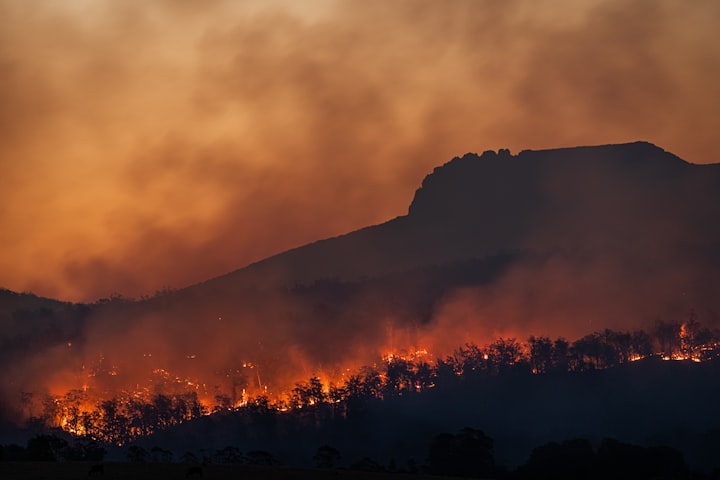The impact of climate change on global biodiversity
The silent threat: How climate change is reshaping our planet's biodiversity

Climate change is one of the most significant threats to global biodiversity today. The impact of rising temperatures, changing precipitation patterns, and extreme weather events is already being felt across the planet, leading to loss of habitats, shifts in species distributions, and increased extinction rates.
One of the primary ways in which climate change affects biodiversity is through habitat loss and fragmentation. As temperatures rise and weather patterns become more unpredictable, many species are struggling to adapt to their changing environments. This is particularly true for species that depend on specific climatic conditions for survival, such as polar bears that rely on sea ice for hunting, or coral reefs that are highly sensitive to changes in sea temperature.
In addition to direct impacts on habitats, climate change is also indirectly affecting biodiversity through changes in species interactions. For example, shifts in the availability of food and resources can disrupt the delicate balance of predator-prey relationships, leading to cascading effects throughout ecosystems. Similarly, changes in temperature and precipitation can alter the timing of important life cycle events.
Climate change is one of the most pressing issues facing our planet today. The impact of climate change on global biodiversity is profound and far-reaching. From the melting of polar ice caps to the increasing frequency of extreme weather events, there is no doubt that our changing climate is having a significant impact on the world’s ecosystems and the species that inhabit them.
One of the most direct ways in which climate change is affecting global biodiversity is through habitat loss. As temperatures rise, sea levels are also on the rise, leading to the loss of coastal habitats and the displacement of species that rely on these areas for food and shelter. Additionally, as temperatures fluctuate and precipitation patterns shift, many species are finding it increasingly difficult to adapt to their changing environments, leading to declines in populations and even local extinctions.
Another significant impact of climate change on global biodiversity is the disruption of ecosystems and the relationships between species within them. For example, as temperatures warm, some species may be forced to migrate to higher elevations.
Climate change is not the only pressure acting on natural systems and its effects are strongly dependent on interactions with these other pressures. Land use change and the attendant habitat loss are currently major threats to biodiversity worldwide. They reduce organisms' abilities to adjust their distributions in response to changing climate. They also produce local amplification of some climate change effects by causing fi-agmentation. degradation and drying of ecosystems (Barlow & Peres 2008). Climate change and land use change, including agricultural expansion, interact to increase the incidence of fire (Aragao et al. 2008). which is often raised still further during extreme climatic events like El Nino (Bush et al. 2008).
Pollution is also likely to amplify many impacts of climate change, as is mining and oil and gas development (Fuller et al. 2008). Thus it is vital to consider the effects of climate change in the context of interacting pressures and the influence the may exert directly on natural systems and on those systems' abilities respond to climate change.
Climate change is a major global threat (Stem 2008) that has already had an observed impact on natural ecosystems. Global average temperatures have risen by 0.7°C over the last century and are predicted to continue rising. The IPCC (2007) projects that temperatures are likely to have risen l.TC to 6.4°C by the end of the 21" century relative to the 1980-1999 baseline. Although such projections do not account for mitigation policies, it is widely accepted that temperature rises are likely to surpass the lower bound, particularly as current models do not take into account climate-carbon cycle feedbacks.
Temperature rises are linked to changes in precipitation regimes, which can be predicted with less confidence as they are largely influenced by regional processes (Parra & Monahan 2008). Depending on the region, precipitation may be projected to increase, decrease and/or change in seasonal distribution.
Biological diversity is the resource upon which families, communities, nations and future generations depend. It is the link between all organisms on earth, binding each into an interdependent ecosystem, in which all species have their role.
The Earth’s natural assets are made up of plants, animals, land, water, the atmosphere AND humans! Together we all form part of the planet’s ecosystems, which means if there is a biodiversity crisis, our health and livelihoods are at risk too.
About the Creator
Reader insights
Nice work
Very well written. Keep up the good work!
Top insights
Easy to read and follow
Well-structured & engaging content
Excellent storytelling
Original narrative & well developed characters
Expert insights and opinions
Arguments were carefully researched and presented
Heartfelt and relatable
The story invoked strong personal emotions






Comments
There are no comments for this story
Be the first to respond and start the conversation.